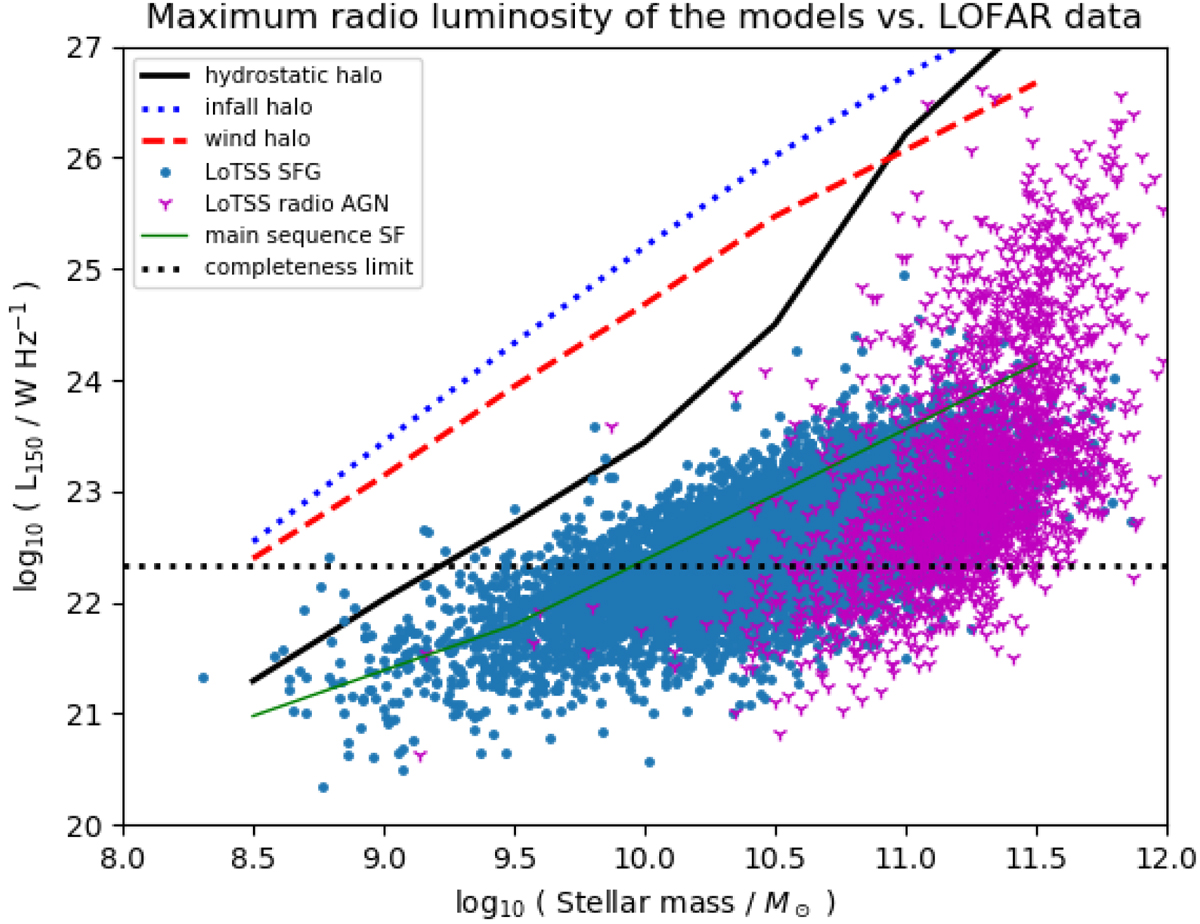Fig. 3.

Maximum 150 MHz luminosity of radio AGN for a given galaxy mass for three different models of the gaseous halo of the galaxies (hydrostatic halo, infall halo, wind halo). Data points are from the LoTSS sample (Sabater et al. 2019), plotted separately for star forming galaxies (SFG), and radio AGN. The radio luminosity expected from star formation for galaxies on the main sequence of star formation at redshift zero is indicated as a solid thin green line (Sect. 2.3, Eq. (3) in Gürkan et al. 2018). The dotted black line denotes the completeness limit, i.e. the median limiting luminosity at the maximum redshift of the sample. For the hydrostatic halo model, radio AGN with the same Eddington-scaled jet power distribution could be hosted by galaxies of all masses. The lower densities in the halos of lower mass galaxies would, however, limit their radio luminosities. Radio AGN need to be intrinsically less powerful or otherwise different in low mass galaxies that are in galactic wind or any quasi-spherical infall phases in order not to exceed the LOFAR radio luminosity constraints.
Current usage metrics show cumulative count of Article Views (full-text article views including HTML views, PDF and ePub downloads, according to the available data) and Abstracts Views on Vision4Press platform.
Data correspond to usage on the plateform after 2015. The current usage metrics is available 48-96 hours after online publication and is updated daily on week days.
Initial download of the metrics may take a while.


